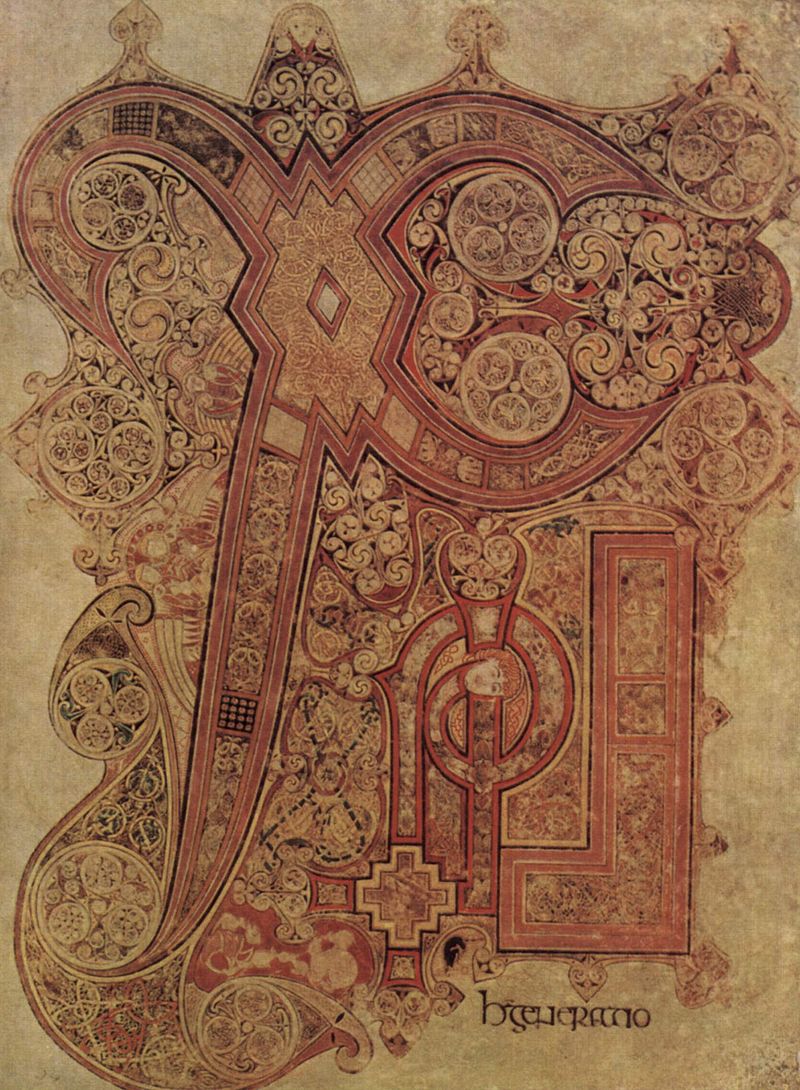The ninth century in early medieval western Europe was an age of monasticism, and this is arguably the most beautiful product from the era. It is the crowning achievement of Hiberno-Saxon art, which really means Irish-English art. Another word for Irish art is Celtic art, and since the Irish were the first to develop Christian monasticism, most Hiberno-Saxon art comes from monasteries, as does this. It is painted on animal skin that’s called vellum and was made in a monastery on the island of Iona off the west coast of Scotland. This amazingly beautiful manuscript is incredibly valuable and was expensive to create. It took four scribes, three illuminators, and 185 calves that were slaughtered for their skin.
This page illustrates the first time Jesus appears in the Bible, and the words literally explode onto the page. Matthew 1:18 reads, “This is how the birth of Christ came about.” This illumination shows the words, “Christi autem generatio,” which is Latin for, “The birth of Christ.” “Christi” is written with the monogram Chi Rho, or χρ in Greek, “autem” is abbreviated with the Greek letter η, and “generatio” is written out at the bottom of the page. The decoration throughout has mostly two-dimensional patterns and designs with some little creatures such as cats, mice, otters, salmon, and three elaborate angels who hold up the left side of the Chi (χ). Sadly, the precise meaning of these symbols is lost to us today. A fascinating detail is the red-haired human head at the center of the Rho (ρ). Very likely this is a portrait of Jesus, as seen through Irish eyes.
Other illuminated pages in the Book of Kells
[nggallery id=book-of-kells]
Suggested Reading

